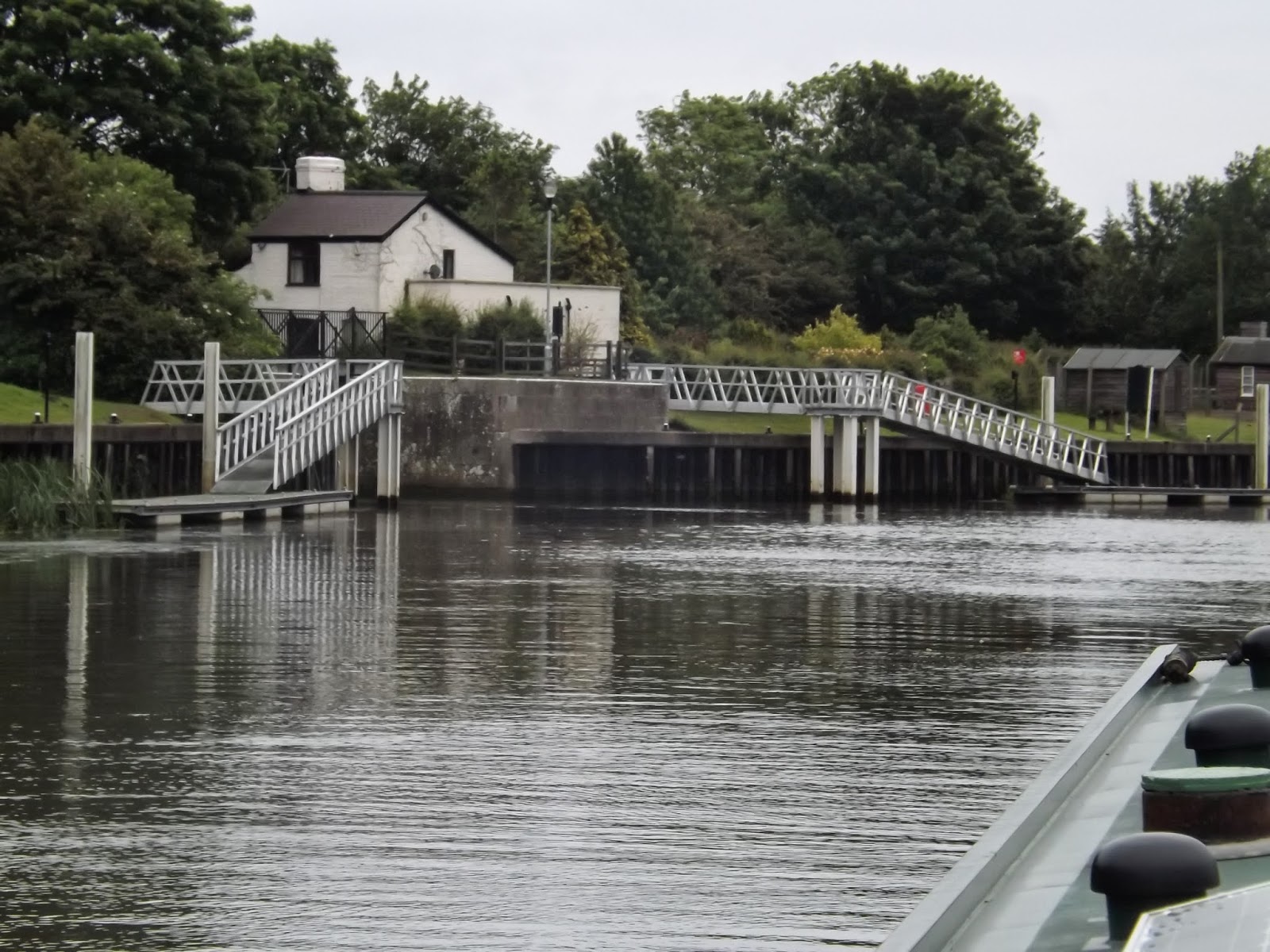We set off with every hope of some sunshine later in the day. We were hoping to only travel about 75 mins so Helen stayed in and did the ironing (sorry Heather!). We passed our ad hoc mooring of the way down to Boston when we couldn't find a mooring on a pontoon and then the entrance to the Horncastle Canal. The canal opened in 1802 and closed in 1887. It was promoted by Sir Joseph Banks who was a local. It left the River With and went up through 12 locks and 11 miles to Horncastle.
The old entrance of the Horncastle Canal. A feasibility study was undertaken for its restoration in 2003. The Lincolnshire County Council adopted it so with more money available in the future we may see it reopened.
When we arrived at the mooring pontoon at Martin Dales it looked full. When we got closer a small motor boat pulled in to the only spot that could have been suitable. They were just stopping for fuel but as we were waiting another cruiser said they were moving off. After they did we swung right round and gracefully landed alongside.
As soon as we were stopped these duck came to see us and Helen game them some of my cake!
We were soon off for a walk up to Woodhall Spa. We made a deviation to see the ruins of the Kirkstead Abbey. The ground were extensive as revealed by the hummocks and mounds around. There was also little St Leonards Church. It is thought that it was built as a chantry chapel in memory of Robert de Tattershall who died in 1212. It is built right next to the abbey grounds.
The door and window in the west wall of St. Leonards Chapel are thought to date from 1212.
We then walked across footpaths to Woodhall Spa itself and at the crossroads we came to the Dambuster Memorial to 617 Squadron in the shape of one of the dams. The site was actually the site of the Royal Hydro Hotel that was hit by a parachute bomb in 1943.
617 Squadron, The Dambusters, memorial. There is also another memorial to others from 617 Squadron that ave died in conflicts sine WWII.
Woodhall Spa came into being when a coal pit was dug but no coal was found and the shaft flooded. Cattle seemed to do well when drinking the water and it was found to be rich in iodine and bromine and a spa was set up with a complex to give water treatments. It became popular and various hotels and supporting shops were built. A Mr and Mrs Tom Wield moved to the area to look after the Spa complex and bath houses. They had this house moved here. It is a prefabricated building built by Boulton and Paul. He set up a business making invalid carriages to move patients from the hotels to the spa complex. They were pulled by donkeys that he also rented. 1/3d per hour for them both. His youngest son John then moved into the business and house and stayed there until 1963. He was also a keen photographer and his pictures are preserved in the museum now housed in the building.
Wield's prefabricated cottage of 1884, Woodhall Spa. Now a lovely little museum, well worth a visit.
We followed a guided walk around the area and came to the spa complex. It has been disused for several years and in 1983 the well collapsed inwards and can now not hope for restoration.
Woodhall Spa bath house and treatment complex. It was built in 1839 and modified and enlarged over the years.
When the Spa business started to wane the then owner built a cinema next to the complex, on the old sports area, to add another attraction. Space was limited so they projected on to the screen from behind as the picture would have been obscured by the wooden beams of the roof trusses. It is still in use and is now the only rear projection cinema in use in the UK.
The Kinema in the Park built in 1922. The airmen from the numerous airfields around used to call it the 'Flicks in the sticks'. The car park was quite full when we passed.
The Town has a feeling of a gentile town with nice shops and parades that have a feel of the seaside towns. In 1888 there were plans to make the place a garden town and architect Richard Adolphus Came was brought in and he is responsible for the half timbered rustic style of buildings and the wide roads etc. I am glad that there was space on the pontoon for us to stop and have a look around. Another 13,000 steps today.
This morning I was listening to all the horror stories of the wicked acts carried out against women around the world recently and whilst walking around it was reinforced to me how lucky we are here as there were police omen and posties, girls were driving cars and boats, and they were out and about, dressing as they pleased and being seen with anybody they wanted. I am perhaps not known for my dealings with women but I am grateful for the freedoms they have, and I am aware that there is still a long way to go for equality, even in our own country. Just thought I had to say something.
























































